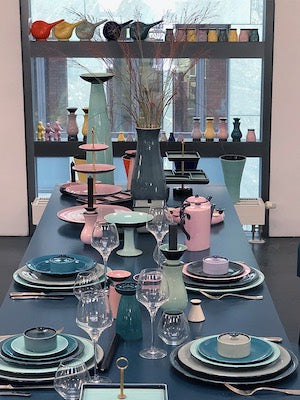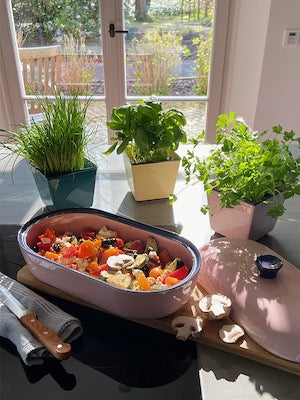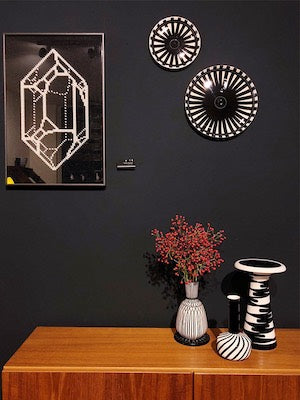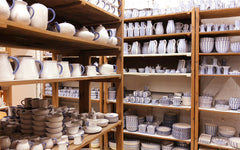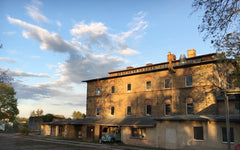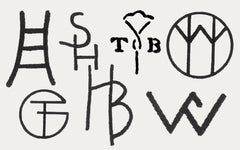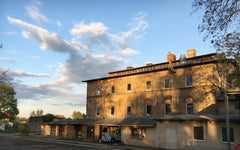Coffee
Coffee - a small bean is conquering the world
The now defunct kingdom of Kaffa in Ethiopia is unanimously considered to be the country of origin and namesake of coffee. Records from the 9th century prove this. The Kaffa people still live in the area of the same name and are still known for their intense and strong coffee. From Africa, the revitalizing hot drink first conquered Persia and the then Ottoman Empire. The first known coffee house opened in Istanbul in 1554. Traveling Europeans discovered the new tasty and amazingly stimulating bean drink and reported about it back home. Under the Sun King Louis XIV, coffee established itself as a luxury good in Europe. During the 17th century, coffee houses sprang up in many European cities. The world-famous Viennese coffee house still exists today. Finally, in 1673, the first German coffee house opened in Bremen.
The triumph of the small bean could no longer be stopped. Whether Hamburg, Berlin, Würzburg or Leipzig - coffee was very popular and became a social and economic factor. At first, coffee was a luxury and prestige drink of the better, middle-class society. In the course of the 19th century, the hot drink increasingly found its way into the parlors of broader social classes; but still had the character of the exotic. Coffee was mainly drunk on Sundays and on special occasions.
In the 20th century, the bean drink became more and more established as a mass product. Morning and afternoon coffee became the elixir of life for many people. Today, coffee is a global luxury food. In many countries it has become a highly valued cultural asset and its cultivation, manufacture and sale an important branch of the economy. Coffee plants are mainly grown in Latin and Central America, as well as in Asia and Africa. And every year over ten million tons of green coffee are harvested. It is mainly consumed in the USA and Europe.
Drinking coffee in Germany
Germany is one of the largest buyers of green coffee worldwide and also the fifth largest exporter of ready-made coffee. The large coffee roasters, some of which are world-famous, are mainly located in the Bremen and Hamburg area. The Germans are a country of coffee drinkers. The individual drinks almost three cups a day, which is more than beer. Since tastes are known to differ, numerous methods of coffee preparation and different types of coffee have found their way into the kitchens and cafés of the republic. Depending on culture, time and personal taste, coffee preparation is constantly evolving. Trends and technical innovations contribute the rest.
The classic hand filter

In the past, coffee was brewed by hand using an attachment filter. The filters were mostly made of porcelain or glass and were placed on the cup. In many places, this method of preparing coffee is still popular today, and in fact this very simple and inexpensive method has recently experienced a real renaissance. The focus is on the original and natural nature of coffee. If desired, the infusion time, the dosage and the type of coffee can be varied. The taste of the coffee is fully and unadulterated.
The coffee machine
Semi-mechanical coffee machines have been around for 200 years. The fully automated models, as we have known them since grandmother's time, appeared in the economic boom years of the 1950s. In principle, they have hardly changed since then - apart from technical progress. A coffee filter, the desired amount of water and coffee powder, and the electric coffee machine does the rest. Filter coffee is still very popular. And after the countless coffee trends of the 1990s and 2000s, when people drank cappuccino, mocha, espresso, etc. and often used coffee capsules and pads, many coffee drinkers are now thinking about the good old coffee machine again.
The coffee machine
The coffee machine is very popular. The beans are freshly ground. The water temperature and the strength of the coffee can be varied. And the fully automatic coffee machine also froths the milk. Depending on the model, numerous coffee variants can be selected, from classic Americano to latte macchiato to espresso. The fully automated coffee machine takes care of all the coffee preparation at the touch of a button. The machines are not cheap, but it is worth investing a little more money. Ultimately, they save time and the result can usually be tasted.
coffee pods and capsules
Coffee capsules caught on in the 1990s; Pads were developed in the early 2000s. This relatively new way of making coffee is emblematic of the lives of busy, often single, young people with high standards. Everything has to be fast, look modern and be a bit extravagant. With high-quality machines you can achieve good results with capsules and pads. With cheap models, however, compromises have to be made in terms of aroma. And that's not the only disadvantage: pods and capsules only work with a corresponding coffee pod or capsule coffee machine. In most cases, branded products can only be used with their own coffee machines. In addition, the pads and especially the capsules have to put up with the accusation of environmental pollution.
The pot infusion
This direct infusion is also a very traditional form of coffee preparation. The predominantly coarsely ground coffee is poured directly into the coffee pot. Then pour over the previously boiling water, which has now cooled to around 91 degrees, let it steep and then pour it through a sieve into the cup.
French Press

No further form of direct infusion in this method originating from France. French Press is now also very common in Germany. Coarsely ground coffee powder is filled into a so-called plunger pot and poured with hot water. After a few minutes, the freely floating coffee grounds are pressed down using a wire press so that the coffee can be poured into the cup without any powder residue.
Die Mokka-Kanne

It really shouldn't be missing in any student flat share. Not to be confused with mocha, this method of preparing coffee also comes from Italy. It is very popular in this country because it works quickly and easily, and the result is at least acceptable. For real coffee lovers, however, this coffee is often too bitter due to the high temperature and low pressure during preparation. The moka pot is placed directly on the stovetop. The water in the lower part of the pot is heated and pushed into the upper part by means of steam pressure. In between is the coffee powder, which is boiled up in this way.
Arabica or Robusta? - that is the question
There are currently 124 known coffee plant species in the world. However, only nine of them are used to make coffee; many of which are only cultivated on a regional basis. From a global perspective, coffee is mainly made from four types of coffee plants. Almost every coffee drinker knows Arabica and Robusta. Liberica and Excelsta are more for real baristas, because these two varieties are really exotic. Arabica and Robusta cover a good 98 percent of the green coffee in world trade. They are undoubtedly the most important and also the finest beans on the coffee market. But which coffee is actually the one with the best aroma?
Arabica
...is the most widespread and economically most important coffee plant. About 60 percent of the green coffee harvested worldwide falls on them. It is mainly grown in the highlands and is considered the highest quality of all coffee beans. Most premium coffees are made from Arabica beans. The coffee made from them is mild and aromatic while also having a low caffeine content. Robusta is the second most important bean on the world market. It grows in the lowlands and, unlike Arabica, can be harvested several times a year because it grows faster and bears fruit more often. Robusta coffee is more bitter and has a stronger taste. In addition, the Robusta bean has a little more body volume, as the coffee connoisseur says. It has a higher caffeine content and is therefore used in particular for espresso. Many espresso makers blend Robusta with Arabica to get both - a strong flavor and enough caffeine. Ultimately, of course, coffee is a matter of taste and everyone has to find their favorite coffee blend. Arabica coffee is very suitable for everyday and frequent consumption. Robusta coffee, and espresso in particular, is something for a quick pick-me-up in between meals, where the taste is less important than the stimulating effect.
What makes a good coffee?

Coffee should not only wake you up early in the morning, it should also taste good. A good coffee is pleasantly hot and unfolds its full aroma. As far as the way of preparation is concerned, every coffee drinker has their own preferences; and of course also in terms of the type of coffee. In addition, there are a few basic and practical tips that guarantee perfect coffee enjoyment. The quality of a coffee rises and falls with the water temperature. The water used to prepare coffee should be slightly below the boiling point (100 degrees); between 90 and 95 degrees the aroma unfolds the strongest. Boiling water, on the other hand, dissolves the bitter substances in the beans, which has a negative effect on the taste. The same applies to water that is too cold: the coffee tastes stale, sour and weak.
The correct dosage of coffee powder is extremely important. Of course, this depends on the type of coffee you want. For example, if you prepare a cup of coffee (200 ml) with a hand filter, you need a heaped tablespoon (about 10 grams) of coffee powder. Up to seven spoons can be used for one liter in the coffee pot to achieve a nice aroma. With the coffee machine it is a little less: seven to nine grams of coffee powder per cup are recommended here.
And finally, the degree of grinding of the coffee powder plays a central role in the preparation. A coffee grinder is highly recommended to freshly grind the beans. This is how the coffee unfolds its full aroma. Whether the mill is operated electrically or by hand is ultimately irrelevant. However, a model with a disc grinder should be used in order to achieve a uniform result when grinding the beans. The perfect degree of grinding is between 0.3 and 0.5 millimeters. Grinding coffee with your own grinder certainly requires some practice, but the result is definitely worth it.
Current coffee trends
For some, drinking coffee is just a means to an end, for many it is a pure luxury and for others it is almost a hobby. Most of the old coffee houses from previous centuries have now disappeared. Of course, there are still some well-known coffee houses - for example in Berlin, Hamburg and Leipzig - that still cultivate this culture. But nowadays, coffee lovers mainly meet in cafés and special coffee bars. And the preparation of coffee is also subject to constant change. Hardly any other drink is so experimented with. Some coffee trends are certainly daring, and by no means every new idea actually catches on. But there are really interesting variants that arouse the interest of coffee lovers.
Bulletproof Coffee
Instead of milk, a piece of butter with your coffee? The trend from the USA sounds a bit hard to get used to, but it provides an unmistakable taste experience. The original recipe combines pasture butter with a highly concentrated coconut extract, the so-called MCT oil. This sophisticated combination of valuable fatty acids with the caffeine in coffee is said to stimulate the metabolism and promote fat burning.
Maca-Coffee
Whether turmeric, maca or reishi mushrooms - superfood is becoming increasingly popular. Many expect the power ingredients to have a health-promoting and strengthening effect. So why not enrich your favorite hot drink with superfood? Currently, the Maca root in particular is all the rage. The Peruvian cress plant is said to reduce stress levels and promote concentration. It is also said to act as a natural aphrodisiac. The maca root also contains many valuable vitamins and trace elements. When ground into powder, it is simply added to the coffee powder.
Egg-Coffee
This coffee variety, which is still quite unknown in this country, comes from the Far East, more precisely from Vietnam. For the unusual coffee topping, an egg yolk is whipped with a little condensed milk until fluffy. The whole thing is rounded off with a pinch of sugar, depending on personal taste.
CoffTea

Anyone who finds it difficult to decide on the question "coffee or tea?" will be particularly pleased about this trend: With CoffTea, dark tea varieties such as black tea and coffee form an unmistakable liaison. But the idea isn't all that new: in China, CoffTea variations have long been on every well-stocked drinks menu.
Cold Brew Tonic
Cold coffee can be delicious and refreshing. The trendy cold brews are not brewed short and hot as usual, but steep in lukewarm water for several hours. This process removes a large part of the bitter substances from the coffee, which is why it tastes particularly mild. Supplemented by a few ice cubes, the perfect summer drink is created.
Buy coffee pots and coffee cups in the online shop
In our online shop you will find many of the coffee pots and coffee cups with which you can make your coffee enjoyment perfect. The full coffee aroma unfolds in the ceramic coffee pots. Ceramic keeps you warm for a long time. You can relax and have a nice cup of coffee. The coffee pots and coffee cups from HB have been made by hand in the traditional way in our ceramic factory for decades. Every single pot and cup goes through the hands of our experts up to 60 times before it meets our quality standards. The beautiful decorations are all applied by hand, so your coffee pot and cups are absolutely unique!

Coffee cups
Show allCoffee tins
Show allCoffee pots
Show allCoffee pot
Show allCup HB 526
The Canada mug by Hedwig Bollhagen with the shape number "526" are extremely popular because of their relatively large capacity of 0.2 liters after...
View full detailsCup HB 526
The Canada mug by Hedwig Bollhagen with the shape number "526" are extremely popular because of their relatively large capacity of 0.2 liters after...
View full detailsCup HB 526
The Canada mug by Hedwig Bollhagen with the shape number "526" are extremely popular because of their relatively large capacity of 0.2 liters after...
View full detailsCup HB 526
The Canada mug by Hedwig Bollhagen with the shape number "526" are extremely popular because of their relatively large capacity of 0.2 liters after...
View full detailsEspresso cups
Show allCoffee cups
Show allMilk coffee cups
Show allCup HB 490
The milk coffee cup from Hedwig Bollhagen with the shape number "490" captivates with its simple and unadorned shape. With a capacity of 0.3 liters...
View full detailsCup HB 490
The milk coffee cup from Hedwig Bollhagen with the shape number "490" captivates with its simple and unadorned shape. With a capacity of 0.3 liters...
View full detailsCup HB 490
The milk coffee cup from Hedwig Bollhagen with the shape number "490" captivates with its simple and unadorned shape. With a capacity of 0.3 liters...
View full detailsCup HB 490
The milk coffee cup from Hedwig Bollhagen with the shape number "490" captivates with its simple and unadorned shape. With a capacity of 0.3 liters...
View full detailsMocha pots
Show allMocha cups
Show allMocca cup HB 558
The demitasse cup with the shape number "558", like the matching 558 demitasse pot, is one of the classics from Hedwig Bollhagen's Marwitz ceramics...
View full detailsMocca cup HB 558
The demitasse cup with the shape number "558", like the matching 558 demitasse pot, is one of the classics from Hedwig Bollhagen's Marwitz ceramics...
View full detailsMocca cup HB 484
The two-piece set of demitasse and saucer by Hedwig Bollhagen with the shape number 484 inspires with a timeless retro design in a simple contour t...
View full detailsMocca cup HB 484
The two-piece set of demitasse and saucer by Hedwig Bollhagen with the shape number 484 inspires with a timeless retro design in a simple contour t...
View full details